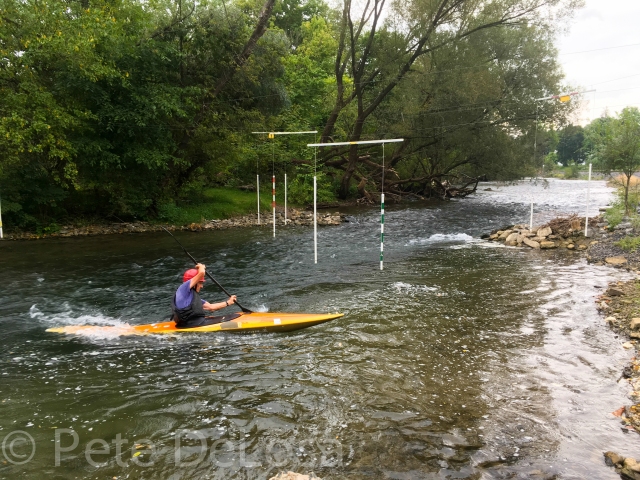 |
| A bald eagle soaks its talons in Lake Natoma near the Folsom Avenue Bridge and the Rainbow Bridge. |
Eagles have been making comeback for past several decades across the country, since the banning of the agricultural spray DDT. The pesticide, linked to damaging environmental impacts and harmful health effects caused eggshell thinning and population declines in multiple North American bird of prey species. Today, nineteen nests have been tallied in eight San Francisco Bay Area counties, including at Stanford University, a mall and a water park, The Mercury News in San Jose reported this week, while experts say bald eagles have been spotted around Folsom Lake at least back to the mid-1990s.
“Lake Natoma could be a relatively new thing,” Capt. Mark Jeter, a warden with the California Department of Fish and Wildlife, told the Sacramento Bee in May 2016 interview, “The species is doing very well throughout the continent. They are expanding into areas where they have not been in a long time.”
I was paddling back to the boat ramp through the slough across from Negro Bar when I saw the bird perched on a rock in shallow water. Up until then, the highlights of the trip had been paddling through a little stretch of whitewater under the Rainbow Bridge and seeing four river otters pop up their heads up out of the water. Seeing the eagle was an uncommon and amazing sight. With my back to the sun, I inched my kayak closer and closer to the bathing eagle.
An eagle conveys a message across all cultures. The Native Americans saw the eagle as a symbol of great strength, leadership and vision, while early Christians saw it as a symbol of hope and salvation. The eagle has been used as a 'banner' throughout history by the great empires of Egypt, Rome and even the United States. It is said, the eagle is man's connection to the divine because it flies higher than any other bird.
“An eagle soaring above a sheer cliff, where I suppose its nest is," said naturalist John Muir, "Makes another striking show of life, and helps to bring to mind the other people of the so-called solitude."
It was enjoying the life as a waterfowl I supposed as it balanced there on the lake rock with its feathers dripping from its bath. I have often mused how I would rather be a loon than an eagle. Yes, eagles soar, but aquatic birds fly and swim, it's the best of both worlds.
The raptor's white head and eyes glistened in the late afternoon sunshine as I anchored my kayak in the shallow rocking bottom of the lake. I held my breath almost every time I raised my waterproof pocket camera to take a photo of the bird. We sat there frozen for several minutes. Seemingly at one with the water and nature around us. Then in a moment, it stretched in giant wings skyward, lifting its talons out of the water, hovering over it by inches till gliding upward towards the safety of the trees.























